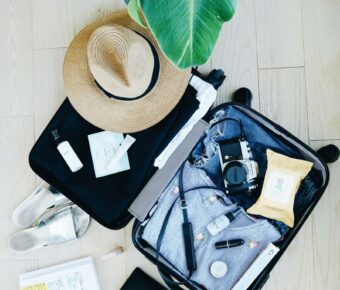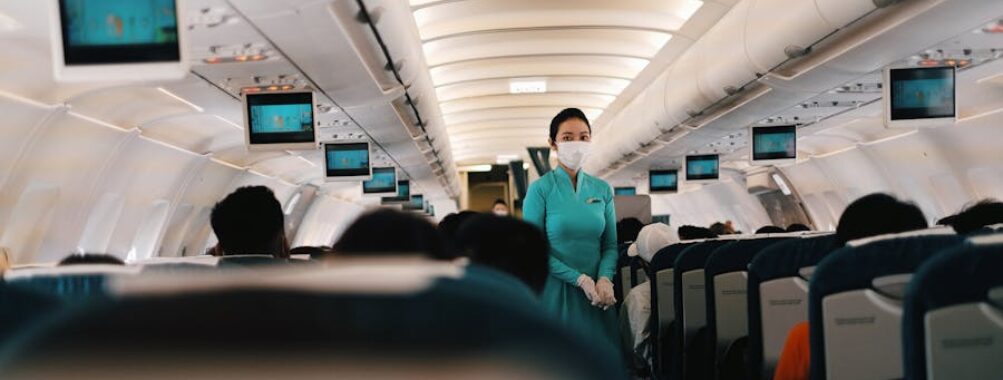
Unwritten Rules of Airplane Hygiene: 7 Essential Tips Every Traveler Should Know
Flying can be a thrill, but it brings a whole world of unwritten expectations. When you’re crammed into a metal tube with dozens of strangers for hours, certain hygiene habits aren’t just polite—they’re downright necessary. Good airplane hygiene isn’t just about your own comfort; it’s about helping everyone have a less stressful, more pleasant journey.
Those secret codes that seasoned travelers follow? They’re legit, and honestly, they make all the difference. Skip the strong cologne, don’t pack pungent snacks, and for the love of travel, bring some mints for those marathon flights. You really don’t want to be “that passenger” who kicks off their shoes and clears a row with foot odor, or who brings a meal that makes the whole cabin wrinkle their noses.
Airplane cabins constantly recirculate air, so hygiene matters even more than it does on the ground. If you stay mindful of your personal cleanliness before and during your flight, you’re not just being considerate—you’re joining a global community that values respect in tight quarters.
Contents
- Key Takeaways
- Understanding the Unwritten Rules of Airplane Hygiene
- Why Hygiene Matters More at 30,000 Feet
- The Origins of Airplane Etiquette
- Personal Space and Cleanliness
- Respecting Arm Rests and Boundaries
- Managing Personal Belongings Thoughtfully
- How to Keep Quiet for a Peaceful Cabin
- Shoes On Policy: Why It Matters
- Navigating the Boarding Process Hygienically
- Minding Your Manners in Boarding Zones
- Lifting Your Own Bag Without Hassle
- Avoiding Bottlenecks During Boarding
- Interactions With Crew and Fellow Passengers
- Communicating with Flight Attendants Respectfully
- When and How to Switch Seats Politely
- Traveling With a Companion: Dos and Don’ts
- Sharing Overhead Bin Space and Storage Etiquette
- Best Practices for Stowing Personal Items
- Navigating Limited Overhead Bin Space
- Handling Noise and Cabin Comfort
- Managing Noise Levels During Your Flight
- The Etiquette of Keeping Quiet on a Plane
- Reclining and Seat Positioning Manners
- When Not to Recline Your Seat
- Consideration for Those Around You
- Airport Security and Hygiene Preparation
- Efficiently Navigating the Security Line
- Maintaining Hygiene at Airport Security Checkpoints
- Frequently Asked Questions
- How can passengers maintain personal cleanliness during long-haul flights?
- How can passengers maintain personal cleanliness during long-haul flights?
- What are the most effective ways to avoid spreading germs while in-flight?
- Are there any particular items of clothing recommended for promoting hygiene during air travel?
- What are the best practices for using shared lavatory facilities on an aircraft?
- How should a traveler properly dispose of waste or sanitary products while on board?
- What etiquette should be followed when dealing with odors or using scents in the close quarters of an airplane?
- More Travel Guides
Key Takeaways
- Toss travel-sized hygiene essentials like sanitizer, mints, and deodorant in your carry-on so you can grab them easily.
- Go easy on scents—perfume, food, or even body odor—since the cabin’s basically a giant shared living room.
- Shower and wear clean clothes before you fly; it’s the easiest way to make the trip better for everyone.
Understanding the Unwritten Rules of Airplane Hygiene
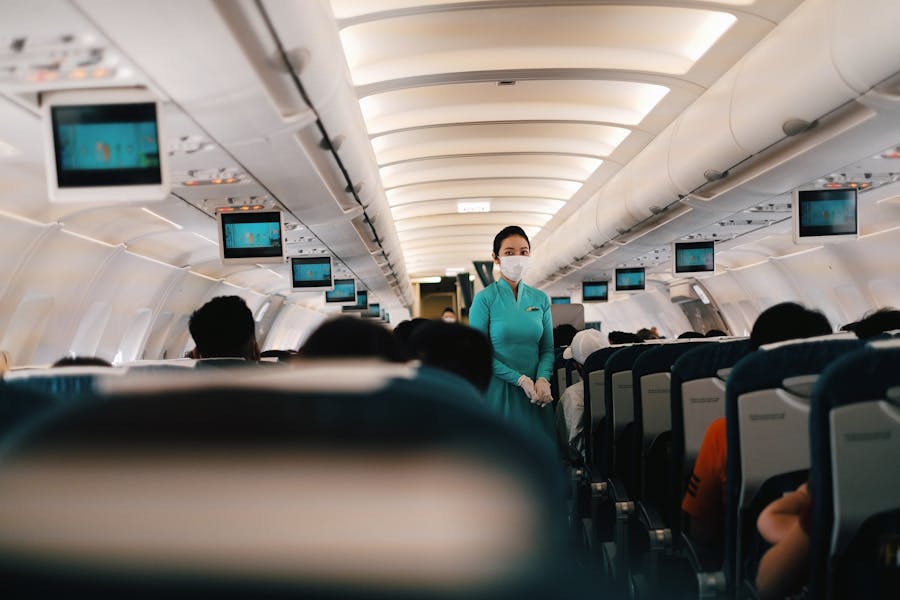
Airplane travel forces us closer together than we’d ever choose. The tight space and recycled air mean hygiene isn’t optional—it’s the ticket to a tolerable flight.
Why Hygiene Matters More at 30,000 Feet
Let’s be real—you’re stuck in a metal tube with a hundred strangers. That puts hygiene front and center! The air system’s decent, but it’s not exactly a mountain breeze. When you’re rubbing elbows for hours, your habits affect everyone nearby.
Take a shower before flying. It’s probably the most important rule, even if nobody says it out loud. Nobody wants to spend a long-haul flight next to someone who skipped deodorant.
Bring a travel-sized hand sanitizer and actually use it. Airplane surfaces? They’re germ magnets. The tray table, for example, often tests dirtier than the flush button in the bathroom.
Make sure you bring:
- Deodorant
- Breath mints
- Hand sanitizer
- Facial wipes for a quick refresh
The Origins of Airplane Etiquette
Airplane etiquette didn’t just pop up overnight—it grew along with commercial flight. Back in the “golden age” of flying, people dressed up and everything felt more formal.
As flying got cheaper and more crowded, unwritten rules emerged to keep the peace in close quarters. Travelers figured out that being considerate made the journey way better for everyone.
A lot of the airline hygiene expectations actually started because of passenger complaints. Those little bathroom signs about towels? They’re there because someone made a mess and ruined it for the next person.
Now, these unwritten rules help us balance personal comfort with respecting shared space. If you’re aware of them, you’re part of the in-crowd of considerate travelers.
Personal Space and Cleanliness
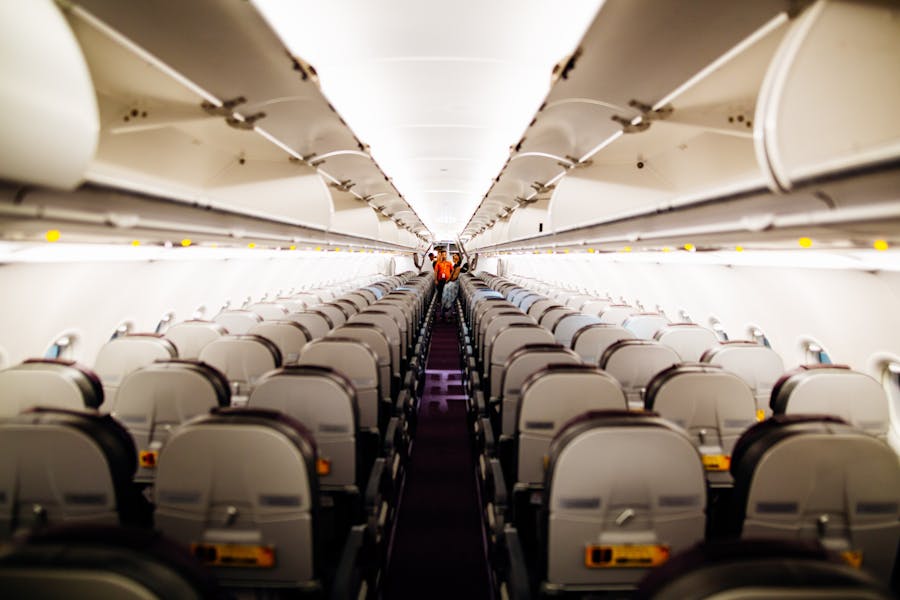
Respecting others and keeping clean on a flight really does make things better for everyone. Small gestures go a long way when we’re all packed in together.
Respecting Arm Rests and Boundaries
Here’s the deal: the middle seat gets both middle armrests. It’s the only perk of that dreaded seat! If you’re by the window or aisle, you’ve got a bit of extra space, so let the middle seat have this one.
Personal space isn’t just about armrests. Don’t stretch your legs into someone else’s footwell, and don’t recline without checking behind you first.
Once, my neighbor kept “manspreading” into my space. I just said, “Excuse me, I need a bit more room,” and that fixed it. Most people aren’t trying to be rude—they just don’t notice.
That invisible line down the middle of shared space? Stick to your side, and everyone stays happy.
Managing Personal Belongings Thoughtfully
Keep your carry-on items in your personal space. That means:
- Bags go under the seat in front, not in someone else’s footwell.
- Don’t use empty seats for your stuff unless you ask first.
- Try to use the overhead bin above your seat.
When you dig through your bag, be careful not to elbow your seatmates. I’ve had to master the “airplane contortion”—that weird bend to reach under the seat without bumping anyone.
Only keep the essentials in your seat pocket. If you stuff it full, you make the person behind you miserable and cramp their legroom.
If you need something from the overhead bin mid-flight, wait for a lull—like when people aren’t sleeping or eating. Move quickly and don’t linger.
How to Keep Quiet for a Peaceful Cabin
Noise is a huge complaint on flights. Always use headphones for videos or music—nobody wants to hear your playlist, even at low volume.
Keep conversations at a reasonable level. The cabin’s white noise can make you want to shout, but try to resist. Your vacation stories might be keeping someone awake.
Parents, pack quiet toys and comfort items for kids. Most passengers get that kids get antsy, but making an effort to keep things calm really helps.
If you have to take a phone call, keep it short and quiet. Nobody wants to hear your work drama at cruising altitude.
Shoes On Policy: Why It Matters
Seriously, keep your shoes on in shared spaces. The cabin floor’s not clean, and nobody wants to see or smell bare feet.
If you need to take your shoes off for comfort:
- Wear fresh socks
- Keep your feet to yourself
- Slip shoes back on before heading to the bathroom
The airplane bathroom floor is notoriously grimy. Those aren’t just water spots! I always pack a clean pair of socks for long flights—it’s a little luxury that doesn’t bother anyone else.
Flight attendants always mention barefoot passengers as a pet peeve. It’s not just about the smell—it’s a hygiene and safety thing. If there’s an emergency, you don’t want to be barefoot on the tarmac.
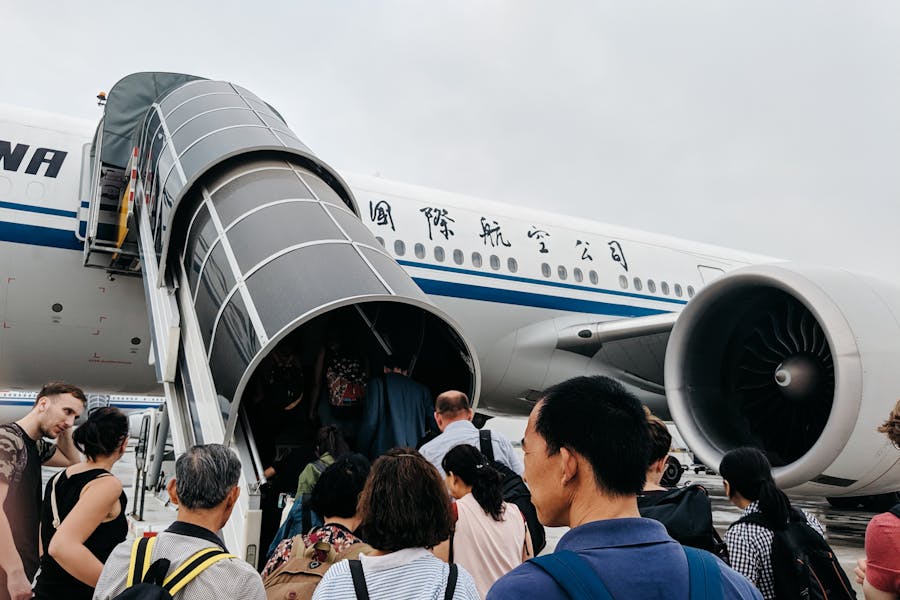
The boarding process can get chaotic, with everyone eager to board. Staying clean and healthy during this rush just takes a few smart moves.
Minding Your Manners in Boarding Zones
Boarding zones are there for a reason. Wait your turn—don’t crowd the gate before your group is called. Hanging back a few feet from others shows respect and keeps you out of the germ zone.
I’ve noticed savvy travelers keep sanitizer in an outside pocket and use it right after scanning their boarding pass. It’s smart, since those scanners touch hundreds of hands a day.
If someone nearby is coughing or sneezing, it’s totally fine to step back a bit. Find a spot away from the main flow of traffic at the gate.
Ticket agents appreciate it when you’re ready with your documents and a mask if your destination requires one.
Lifting Your Own Bag Without Hassle
Treat your carry-on like your own hygiene bubble. If you can lift it yourself, you avoid unnecessary touching and awkwardness.
Pack light enough to handle your own bag in the overhead bin. If that’s tough, try a spinner suitcase or a backpack for easier lifting.
Wipe your bag handles with sanitizing wipes before and after security bins. Those bins see thousands of bags and rarely get cleaned.
If someone offers to help, it’s okay to politely say, “Thanks, but I’ve got it!” Most travelers understand the desire for personal space these days.
After landing, use a sanitizing wipe on your bag handle again—just a little peace of mind.
Avoiding Bottlenecks During Boarding
Aisle blockages happen when people fumble with bags or can’t find their seat. Don’t be that person! Memorize your seat number and know which side of the plane you’re on before you board.
I always prep my essentials in a small bag for under the seat. The rest stays in my carry-on for the overhead.
Step into your row as soon as you reach it. If you need to organize your stuff, do it from your seat so others can keep moving.
If someone holds up the line, give them space instead of crowding behind them. Patience means fewer germs shared up close.
Here’s a tip: use the terminal restroom before boarding. It’s cleaner than the plane’s and keeps you from having to get up right after takeoff.
Interactions With Crew and Fellow Passengers
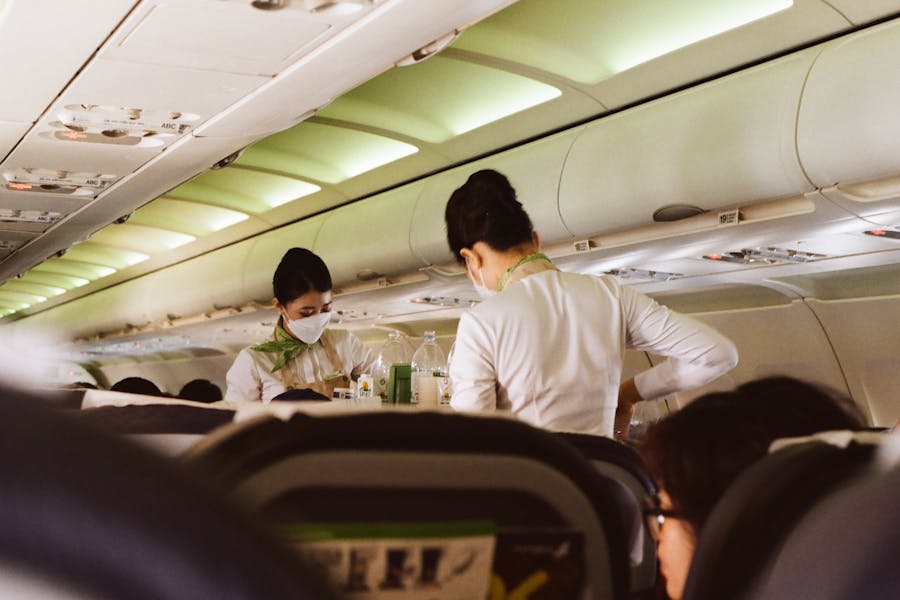
How you treat others on a flight can totally change your experience. Being thoughtful toward flight attendants and fellow travelers makes the whole trip smoother.
Communicating with Flight Attendants Respectfully
Flight attendants aren’t just there for snacks—they’re your safety guides. When they speak, pause your entertainment and listen up. Sometimes it’s crucial safety info.
Remember your manners. “Please” and “thank you” go further than you think at 30,000 feet.
Take off your headphones when ordering. Cabin crew hate repeating themselves because you can’t hear.
If you need help, press the call button instead of wandering the aisles. But don’t overdo it for little things.
Flight attendants juggle a lot. A little patience and a smile can make their day, especially during turbulence or delays.
When and How to Switch Seats Politely
Thinking about switching seats? Wait until boarding finishes before you ask. Never pressure someone to move—they may have picked their seat for a good reason.
Check with a flight attendant if you spot an empty seat. Sometimes seats need to stay empty for balance or upgrades.
Be straightforward: “Would you mind trading so I can sit with my family?” is better than a long story.
Don’t ask someone to give up a better seat for a worse one. Stick to swaps that are fair.
If someone says no, just accept it. They’re not being rude—they paid for that seat, too.
Traveling With a Companion: Dos and Don’ts
When you’re flying with someone, don’t shout across aisles or rows. Keep your voices down so others can relax or work.
If you’re two people in a three-seat row, take turns with the middle seat. It’s only fair.
Coordinate bathroom trips to avoid climbing over your neighbor every half hour.
Don’t assume your travel buddy wants to chat the whole time. Bring headphones and respect their need for quiet.
Share snacks and blankets, but don’t hog the armrest. The middle seat gets both—it’s just the way it is.
Sharing Overhead Bin Space and Storage Etiquette

Finding a spot for your stuff can feel like a race. If you know how to share overhead bin space, the whole boarding process gets easier (and less awkward).
Best Practices for Stowing Personal Items
Put smaller things—purses, laptops, backpacks—under the seat in front of you. That leaves overhead bins for bigger bags that won’t fit anywhere else.
When you use the bin, set your suitcase wheels-first against the back or side. That way, you make room for everyone’s things.
Don’t spread your stuff across multiple bins if people are still boarding. I once saw someone take up a whole bin with a tiny bag and a jacket—don’t be that person.
If you have a coat, fold it on top of your bag or wait until others have stowed their essentials before squeezing it in.
Let’s clear up a common misconception: that overhead bin above your seat? It’s not actually “yours.” You’re sharing that precious space with everyone around you. When you find your assigned bin full, don’t panic—just look for open spots further back in the plane. Avoid stowing your bag up front, since folks who haven’t boarded yet will need that space.
If a flight attendant starts moving bags around, go with the flow. They’ve got a knack for Tetris and usually make it work so everyone’s stuff fits.
When you’re late to board, you might have to check your carry-on. Don’t make a scene or try to cram your bag into a packed bin. That only holds up the entire flight, and nobody wants that.
Here’s a little secret: board with your group, not earlier or later. It’s your best shot at snagging bin space close to your seat, and you won’t annoy your fellow travelers.
Handling Noise and Cabin Comfort
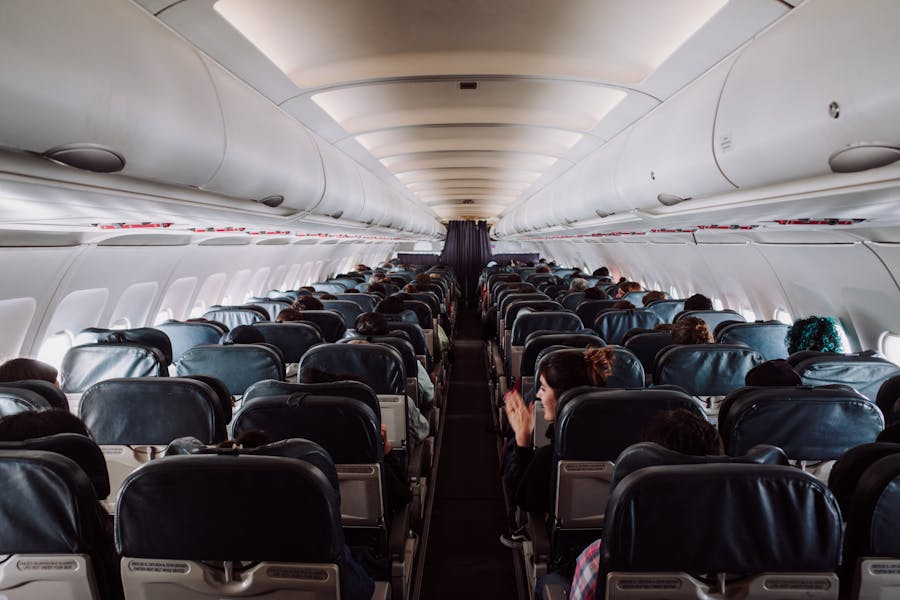
Airplane cabins get loud. It’s just part of the deal—metal tube, lots of people, nowhere for sound to go. If you want a peaceful flight, you’ll need to take matters into your own hands.
Managing Noise Levels During Your Flight
Ever noticed how a fussy baby three rows away sounds like they’re right beside you? That’s the acoustics of air travel for you. I always toss noise-canceling headphones in my bag (these ones are a lifesaver on long-hauls). If those aren’t in your budget, even basic earbuds can make a world of difference.
Keep your own devices quiet. If you can hear your show with your headphones off your ears, so can your seatmate—turn it down a notch.
Parents, bring quiet toys and activities. I once sat behind a mom who handed her toddler playdough—brilliant move. Hours of peace.
Mute your phone and laptop. That sudden ringtone in a calm cabin? It’ll jolt everyone awake.
The Etiquette of Keeping Quiet on a Plane
Loud talkers, listen up—airplanes aren’t the place for shouting matches. Try to use your “library voice,” even if you’re naturally boisterous (I know, it’s tough).
Pick your moments. Chatting during boarding or meal service? Totally fine. But once the lights dim and folks try to nap, keep it low or just pause the conversation.
Quick tip: keep pre-takeoff phone calls short and discreet. Nobody wants to overhear your life story at 6 a.m.
Laughing fits are contagious but keep the volume in check. Your comedy binge shouldn’t wake up the whole row.
If someone’s being noisy, don’t stew in silence. Politely ask them to lower their voice—most people don’t even realize they’re loud and will happily oblige.
Reclining and Seat Positioning Manners
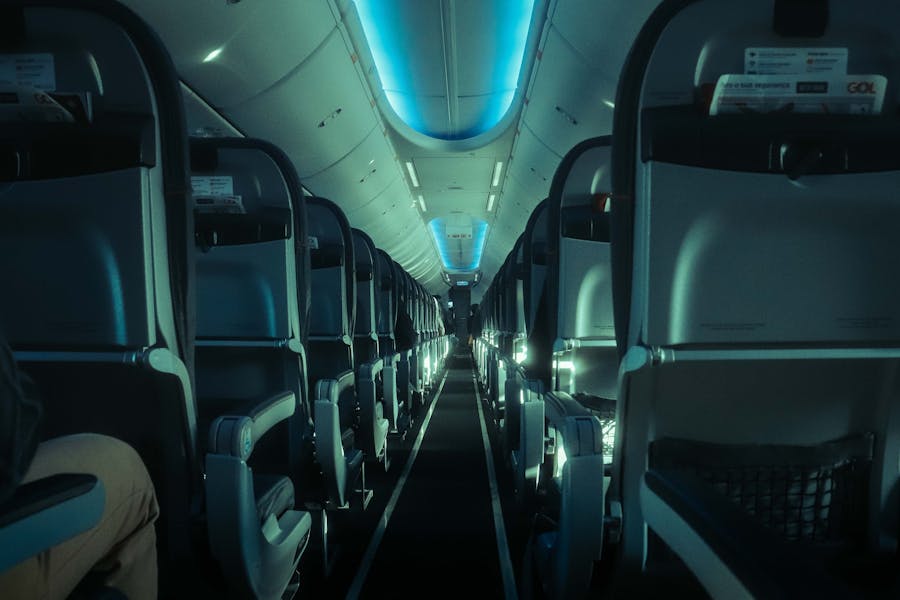
Your seat isn’t a throne; how you use it can make or break someone else’s flight. Reclining is a touchy subject, and there’s a right way to do it.
When Not to Recline Your Seat
Keep your seat upright during meal service. Trust me, nothing ruins a meal faster than a tray jammed into your stomach.
On short flights (think under two hours), you can probably skip reclining altogether. It’s not worth the awkwardness, especially when most folks aren’t trying to sleep anyway.
Always check behind you before you lean back. If someone’s working on a laptop, your sudden recline could smash their screen. I’ve seen it happen, and it’s ugly.
Tall passengers behind you? Maybe just don’t recline. It’s a small gesture that means a lot.
Consideration for Those Around You
When you do recline, go slow. Easing back gently gives the person behind you a chance to adjust. The “slam back” move? It’s universally hated.
Honestly, just ask before you recline. A quick “Mind if I lean back a little?” can go a long way.
If you’re in the exit row or up against a wall, your seat might not recline at all. Pack a neck pillow or something else comfy so you’re not caught off guard.
Only recline as much as you need to get comfortable. No need to max it out—middle-ground positions exist for a reason.
Airport Security and Hygiene Preparation
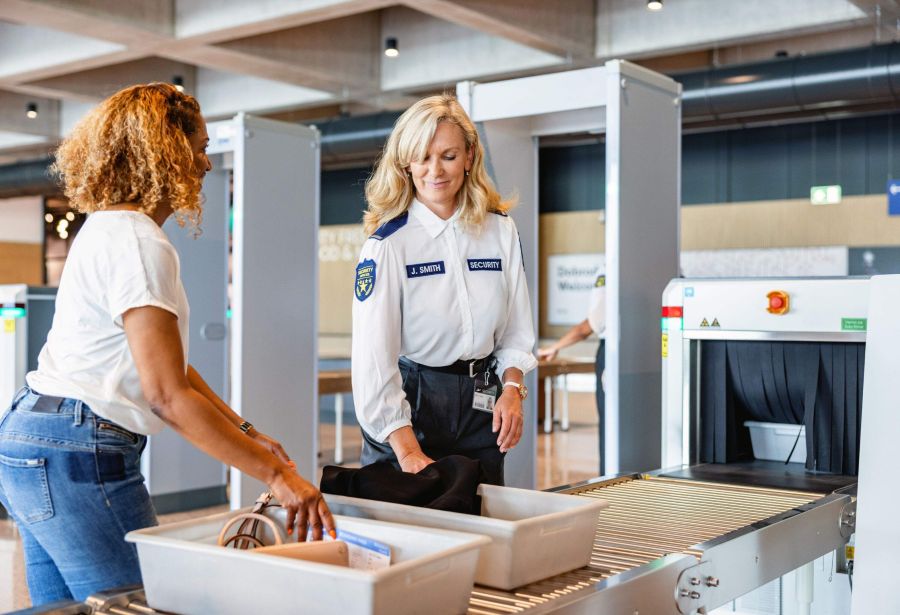
Airport security doesn’t have to be a nightmare if you plan ahead. Staying clean in those crowded lines takes a bit of strategy, but it’s easier than you think.
Pack your bag with security in mind. Stick to the 3-1-1 rule for liquids: nothing over 3.4 ounces, all in a single quart-sized zip bag. Don’t forget hand sanitizer and liquid soap.
Wear slip-on shoes. Wrestling with laces in front of a line of impatient travelers? Hard pass.
Keep your ID and boarding pass handy—outer pocket, not buried at the bottom of your bag. It keeps things moving and your stress level down.
If you fly a lot, spring for TSA PreCheck. You’ll breeze through with less hassle and less contact with those grimy security bins.
Maintaining Hygiene at Airport Security Checkpoints
Security bins are probably the dirtiest thing you’ll touch at the airport. I always bring sanitizing wipes and give them a quick swipe before tossing my stuff in.
After you clear security, use hand sanitizer immediately. It’s a simple step, but it’ll save you from picking up who-knows-what from bins and scanners.
Try using a small cloth or paper bag for your phone, wallet, and keys. It keeps them from touching the bin directly.
Wear socks without holes. You’ll be padding around barefoot otherwise, and that airport floor’s seen better days.
Frequently Asked Questions
Air travel brings up all kinds of hygiene questions, and some of the best tips aren’t obvious. Here’s what I’ve learned after too many hours in the air.
How can passengers maintain personal cleanliness during long-haul flights?
Toss travel-sized hygiene essentials in your carry-on. I never skip facial wipes, hand sanitizer, or deodorant—they’re tiny but make a huge difference.
A travel toothbrush and toothpaste (under 3.4 oz, of course) can be a game-changer. Brushing your teeth mid-flight or before landing makes you feel human again.
Moisturizer is a must. The air up there is drier than you’d expect, and your skin will thank you for a touch-up every few hours.
How can passengers maintain personal cleanliness during long-haul flights?
Toss travel-sized hygiene essentials in your carry-on. I never skip facial wipes, hand sanitizer, or deodorant—they’re tiny but make a huge difference.
A travel toothbrush and toothpaste (under 3.4 oz, of course) can be a game-changer. Brushing your teeth mid-flight or before landing makes you feel human again.
Moisturizer is a must. The air up there is drier than you’d expect, and your skin will thank you for a touch-up every few hours.
What are the most effective ways to avoid spreading germs while in-flight?
Hand sanitizer is your best friend. Use it before you eat and after every lavatory visit.
Wipe down your tray table, armrests, and that entertainment screen with disinfectant wipes. They rarely get a proper cleaning between flights.
Cough or sneeze into your elbow, not your hand. It keeps germs from spreading all over the cabin.
Are there any particular items of clothing recommended for promoting hygiene during air travel?
Go for breathable, natural fabrics like cotton. Synthetics trap sweat and odors, and nobody wants that on a long flight.
Dress in layers. Cabin temps swing wildly, and you don’t want to sweat or shiver for hours.
Compression socks are a smart move for long-hauls—your legs will thank you, and you’ll feel less sluggish after landing.
Always wash your hands well with soap and water. That tiny bathroom sees a lot of action.
Use a paper towel to touch faucets and open doors. No need to add more germs to your hands after you’ve just washed them.
Keep your bathroom trips quick, especially when the plane’s full. The less time you spend in there, the better.
How should a traveler properly dispose of waste or sanitary products while on board?
Never flush anything but toilet paper. Airplane plumbing is finicky and clogs easily.
Use the waste bins in the lavatory for things like diapers or sanitary products. They’re there for a reason.
When you’re done with food or snacks at your seat, wait for the crew to collect trash or use the bag they give you. Don’t stuff wrappers in seat pockets—it’s gross for the next person and makes cleaning harder.
What etiquette should be followed when dealing with odors or using scents in the close quarters of an airplane?
Skip the heavy perfumes and colognes before you board. Trust me, that signature scent might seem subtle at home, but in a sealed cabin with recycled air? Everyone around you gets a front-row seat—and not everyone’s a fan.
Thinking of bringing food? Maybe leave the egg salad or tuna sandwich behind. Those strong smells linger far longer than you’d expect, and honestly, you don’t want to be “that passenger” everyone remembers for the wrong reason.
If you find yourself in a tricky odor situation, don’t panic. Just flag down a flight attendant quietly; they’re usually equipped with air fresheners and have seen it all. They know how to handle these moments without making a scene.

